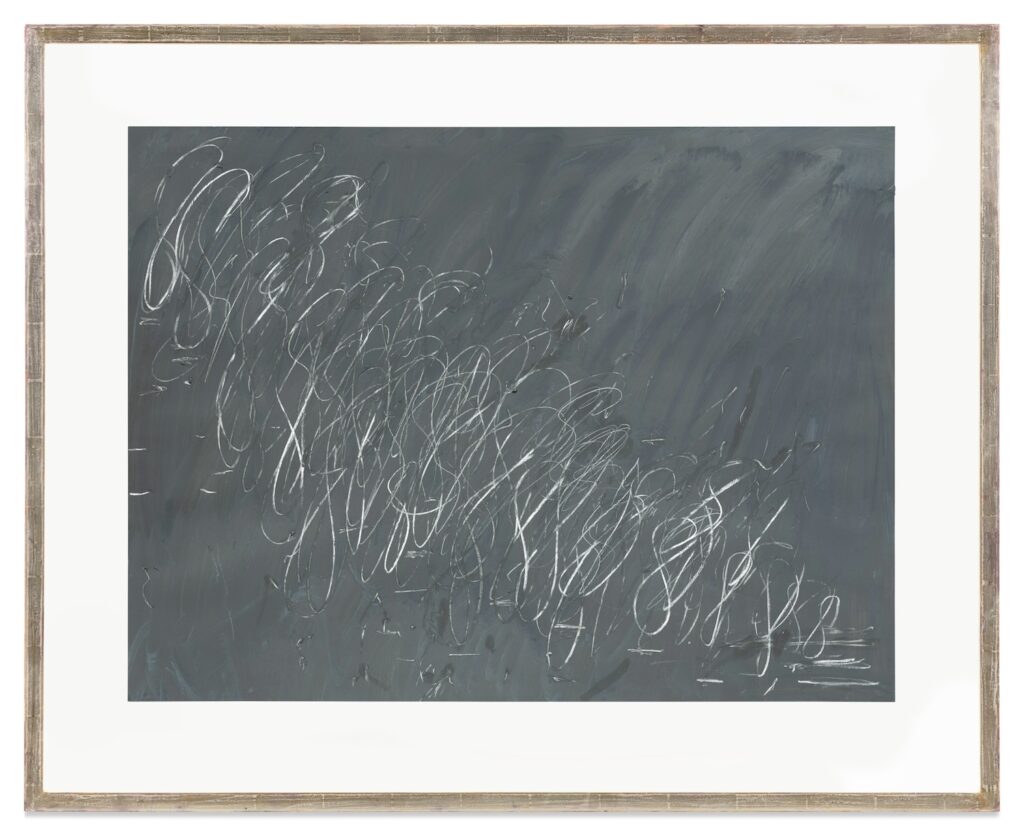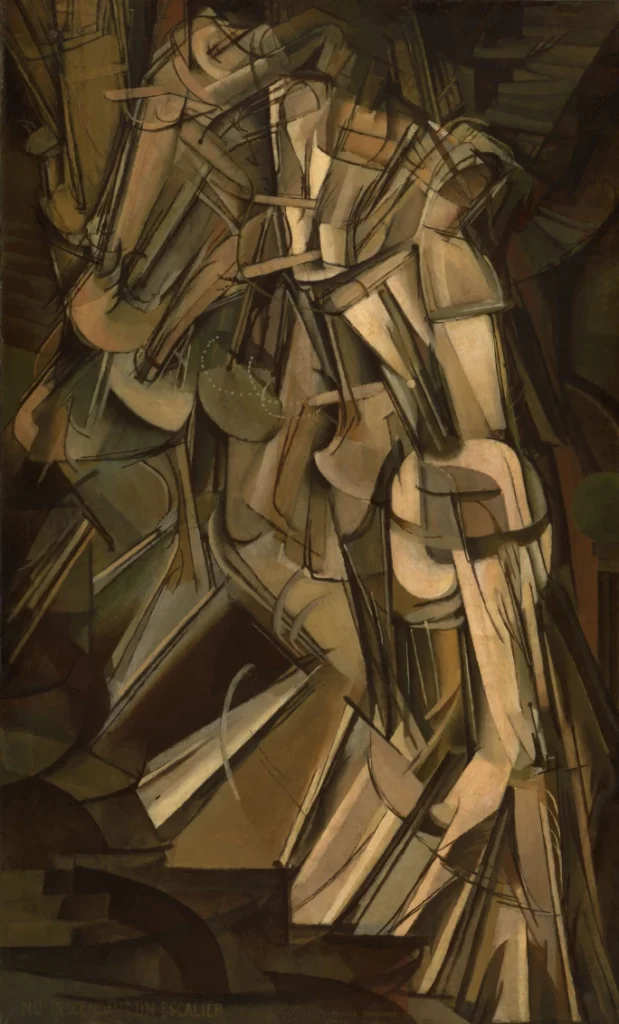
When it was published in the 1999 catalogue of his own collection, Cy Twombly’s publisher Lothar Schirmer listed the title of this amazing 1968 drawing, which he’d acquired directly from the artist in 1968, as Study after Duchamp: Nude Descending a Staircase.

When Schirmer (RIP) sold it yesterday at Sotheby’s, however, it was listed only as Untitled. And whoever wrote the lot essay for the Twombly wanted to connect it to Duchamp’s painting so bad, they began the essay with a picture of it.
And they said, “Untitled also pays homage to art historical forerunners and their attempt to capture movement in space and time,” without naming Duchamp. And then they quoted Suzanne Delehanty,
Like shadows of Duchamp’s Nude Descending a Staircase, figure eights, frequent personages in Twombly’s cosmos of signs, borrowed perhaps from the mathematical symbol for infinity, multiply, recede and climb through the surface of a 1968 oil and crayon on paper to express, as does the 1912 nude, an abstraction of motion in space-time.
trying to call Twombly’s symbols and signs personages without surrendering their status as abstract marks. [Delehanty’s text is cited as coming from the collected writings on Twombly edited by Nicola Del Roscio in 2002, which elides its origin as a catalogue text for Twombly’s 1975 show at the ICA in Philadelphia, the city of Duchampian love.]
Discussing this and a couple of other related works on paper in his catalogue for Twombly’s 1994 MoMA retrospective catalogue, Kirk Varnedoe mentioned Duchamp exactly once, before going on at length about the Futurists:
That language of flow and fracture draws directly on the early modern fascination with the “cinematic” decomposition of forms in motion, in Duchamp (Nude Descending a Staircase,1912) and most notably among Italian Futurist artists, particularly Giacomo Balla.
It feels like a confluence of aversions: to figuration, to referencing other artists’ work, or to referencing Duchamp’s works specifically, but it feels acute in the detitling of this particular drawing. Looking at Duchamp’s painting had an impact on Twombly’s most significant body of work, which he apparently referenced many times. And Twombly went to great lengths to make sure his work was permanently installed down the hall from Duchamp’s. I, for one, would love to see something more on this connection than a passing namecheck.
